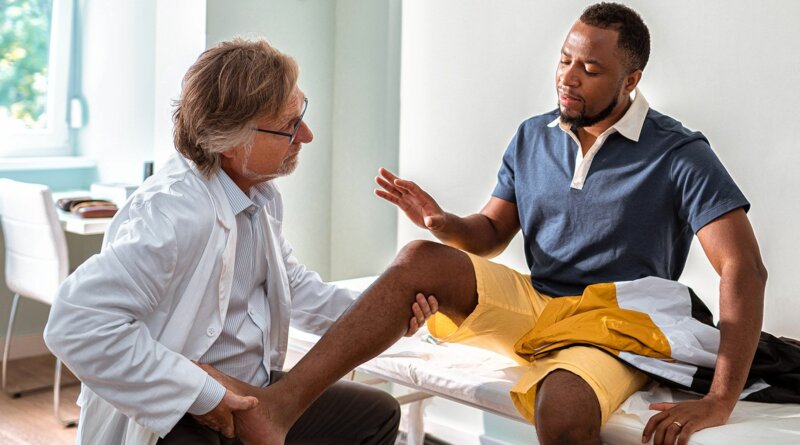Psoriatic Disease: Why It’s Misunderstood
By Diane Talbert, as told to Keri Wiginton
People often describe psoriasis as raised red patches with white silvery scales. As a person of color, when my psoriasis is active, it’s a thick, purplish hue with scales that crack and bleed. I itch like crazy.
I also have psoriatic disease that involves my joints. That’s a kind of inflammation that can affect the joints. I get serious fatigue, morning stiffness, swollen fingers and toes, and pain in my tendons.
So many people have said to me, “You have psoriasis? Isn’t that just dry skin?” With people thinking like this, we will always be misunderstood. By family, friends, and doctors.
Searching for Answers
I’m 62 now. Thankfully, I’m on a medication that helps manage my psoriatic disease. But that hasn’t always been the case.
When I was 5, the staff at my school feared my psoriasis was contagious. They sent me to the hospital on my first day. I had to stay there for 3 months. They had to call in a specialist who finally diagnosed me with psoriasis.
I don’t think most doctors in 1963 had ever seen a person of color who had more than 80% of their body covered in plaques. And some doctors said I didn’t have this disease because it didn’t look like what they thought psoriasis should look like.
I learned at a young age that I had to be my own best advocate. I started researching psoriasis as a teenager. To my surprise, I never came across one picture or reference to a Black person with it. Over the next 40 years, I lost count of the doctors who didn’t know how to treat me.
Skin and Joint Involvement Aren’t Always Linked
In my 20s, I started getting aches in my joints and my nails started pitting pretty bad. This was painful because my skin would get really thick and lift off the nails. At the time, my doctors said this was due to my psoriasis. But they didn’t test me for joint inflammation.
One doctor told me I was overreacting, but if the pain was that bad, I should take an aspirin. They said I was too young, even though you could see the swelling in my hands. Instead, they diagnosed me with anxiety and depression.
After going to numerous doctors, I found a dermatologist who told me to go to a rheumatologist. I finally got a diagnosis of psoriatic disease of my joints at 50 — 25 years after my first symptoms.
Finding Quality Care
I started a new biologic medicine at the beginning of the pandemic. But I’ve been on them for 20 years. These are drugs that change how the immune system works. They can slow down the inflammation process, and they work really well for psoriatic disease. But compared to white people, Black people in the U.S. are less likely to get this kind of treatment.
I believe we, as minorities, struggle so much more with this disease. I’ve spoken with so many people of color who’ve never heard of biologics. I honestly don’t think anyone is going to tell you about them if you don’t have adequate insurance to pay for them. Growing up, I didn’t have great medical coverage, so I didn’t get the best treatment. I also believe that’s why it took me longer to get a proper diagnosis.
To be honest, I didn’t understand what “disparities in health care” meant when I was younger. But I remember a doctor telling me to add Vaseline to my medication so it would last a whole month. I had scales on 80% of my body, and that’s all he said he could do for me. I spent years taking treatments that didn’t work.
I think we need to talk about these inequities. Because, speaking from experience, low-income people get different treatment in our medical system. We do get overlooked.
How to Find the Right Doctor
If you have psoriatic disease of the joints — or think you do — see a rheumatologist. I’ve had skin involvement for more than 50 years and joint inflammation for 30 years. But I only saw my first rheumatologist about 10 years ago.
And find a dermatologist who’s familiar with psoriatic disease. The one I have now is very knowledgeable. But many I’ve had in the past haven’t been.
It’s also helpful that my dermatologist and rheumatologist are on the same page about my treatment plan.
Before you see your doctor, try to keep a journal of your symptoms. That may help point your doctor in the right direction a little quicker. You’ll want to keep track of things like:
- Swelling in your fingers or joints
- Pits in your nails
- Swelling elsewhere, like your heel
- How tough it is to get out of bed in the morning
- How tired you are
- How often you feel tired
And when it comes to your doctor, don’t let them shut you down. As I’ve gotten older, I’ve had a chance to look back at how doctors have treated me. They would make decisions and not involve me in my treatment plan. That was a problem for me. I felt like they were telling me to be quiet.
Here are some other problematic things I’ve heard:
- The pain is all in your head.
- I don’t know what to do to help you.
- We did all the tests, and we can’t find anything wrong.
And my all-time favorite, which came from an older rheumatologist: Black people don’t get psoriasis.
Get Checkups
My regular doctor knows about my psoriatic disease, but that’s not why I go to her. I know that I need to have regular checkups because of the other conditions that come along with having psoriatic disease. I have:
- High blood pressure
- High cholesterol
- Diabetes
My doctor and I need to monitor them all.
Another reason I see my regular doctor is that she might see something that my specialists miss.
Don’t Give Up
Make sure you give any new treatment a chance. Even if you’re on the right medicine, it can take a few months for it to work. It’s been trial and error for me with treatments for 50 years. But so much has happened in the medical community during that time, and we have so many effective choices now.
Diane Talbert, 62, found out she had psoriasis when she was 5. She started having symptoms of joint inflammation in her 20s. She is a blogger, speaker, and advocate for those with psoriatic disease and other chronic diseases. She founded “Power Beyond Psoriasis,” a nonprofit group. Her No. 1 supporter is her husband, Alvin.



